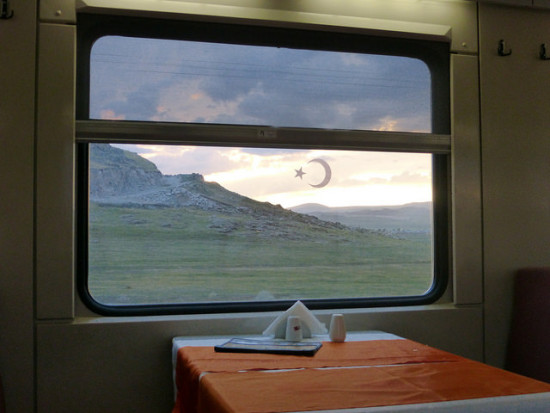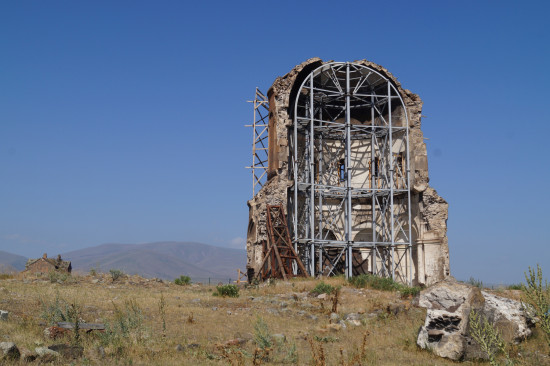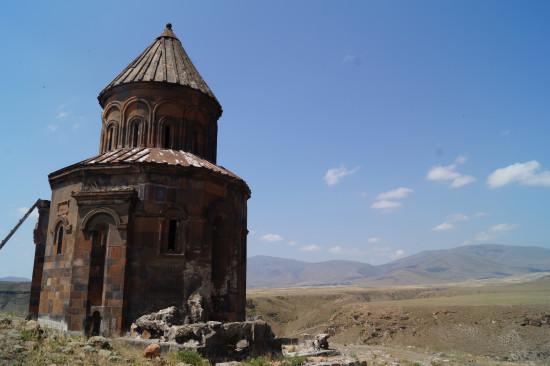
The ruined city of Ani
When we put together a rough outline of where we’d like to go on our trip, I ran across a lot of lists like this that named a small, ruined town in Turkey as one of the best ruined/abandoned places in the world. The town, in the far eastern part of Turkey on the (disputed) border with Armeina, is called Ani, and it’s been abandoned since 1319. I love ruined and abandoned places – especially massive ones – places designed to hold hundreds of thousands of people that are now thoroughly empty, so it’s no surprise that Ani made our list of “Must-sees” in Turkey.
Getting there was part of the adventure. Having arrived into Istanbul and explored some of the Black Sea towns in western Turkey, we needed to go about 650 miles east across nearly the entire country. The plan was to take the train to Ankara and then continue on another train from Ankara out to Kars, the nearest city. Unfortunately, due to construction in Istanbul, train service between northwestern Turkey and Ankara was suspended, so we took a bus to Ankara, and then hopped onto our ~24 hour train from Ankara to Kars.
While on the train, we made friends with a woman from France and her 16 year old son who were also heading to Ani. We agreed to search out a hotel in Kars together and then split the cost of a taxi to Ani the next day, which worked out great. After spending a little time wandering the streets of Kars and grabbing dinner, we headed to bed early in preparation for a long day on our feet at the ruins.
The taxi ride from Kars to Ani was an uneventful 45 minutes, and before we knew it, we had arrived at the ruins. As we expected, there were very few fellow tourists at the site – no more than a dozen others – so we had the place mostly to ourselves. We had negotiated 5 hours of wait time with our taxi driver, and we got to exploring pretty much immediately.
The expanse of the city is the first thing you notice; the ruins occupy a huge tract of land, making it obvious that the city once housed a huge population (up to 100,000 at one point). The landscape is that of a green and yellow meadow dotted with hundreds of reddish-brown ruins. Of all the ruins, the one I had been most looking forward to was the Church of the Redeemer – a domed church built in 1035, half of which collapsed in a storm in 1955 leaving a ruined half-dome shell. It’s beautiful in photos (compare to my photo below), and I couldn’t wait to see it in person. Unfortunately for us (but fortunately for later visitors), a restoration project had just begun and would run for the next few years, leaving the church propped up by internal steel scaffolding.
I have to admit, I was pretty bummed out. We had traveled all this way and spent all this money to get here, and the thing I was looking most forward to wasn’t as advertised. Of course, I understand why the work is necessary and I applaud the Turkish government for finally taking steps to preserve Ani, but we couldn’t help but marvel at our bad timing, as the scaffolding had only gone up in the past couple of months.
Despite the restoration work, we did manage to get several good pictures that capture the feel of the city.

Ceiling mural in the Church of St. Gregory of Tigran Honents, finished in the late 13th century. Among the best-preserved buildings in Ani.

The Aras river running alongside the eastern edge of Ani, forming the border between Turkey and Armenia.
If you’re headed to eastern Turkey anyway, you should definitely stop off and explore Ani. If you’re thinking of going out of your way for it, I’d recommend adding at least a couple days doing something else out east, or waiting until the restoration work is complete. While the ruins were by no means disappointing, at the end of the day, we were left unsure if we would go again if we had it to do all over. Turkey is a huge country with many, many places worthy of a visit. With our limited time, the two days spent traveling could perhaps have been put to better use doings something else.







